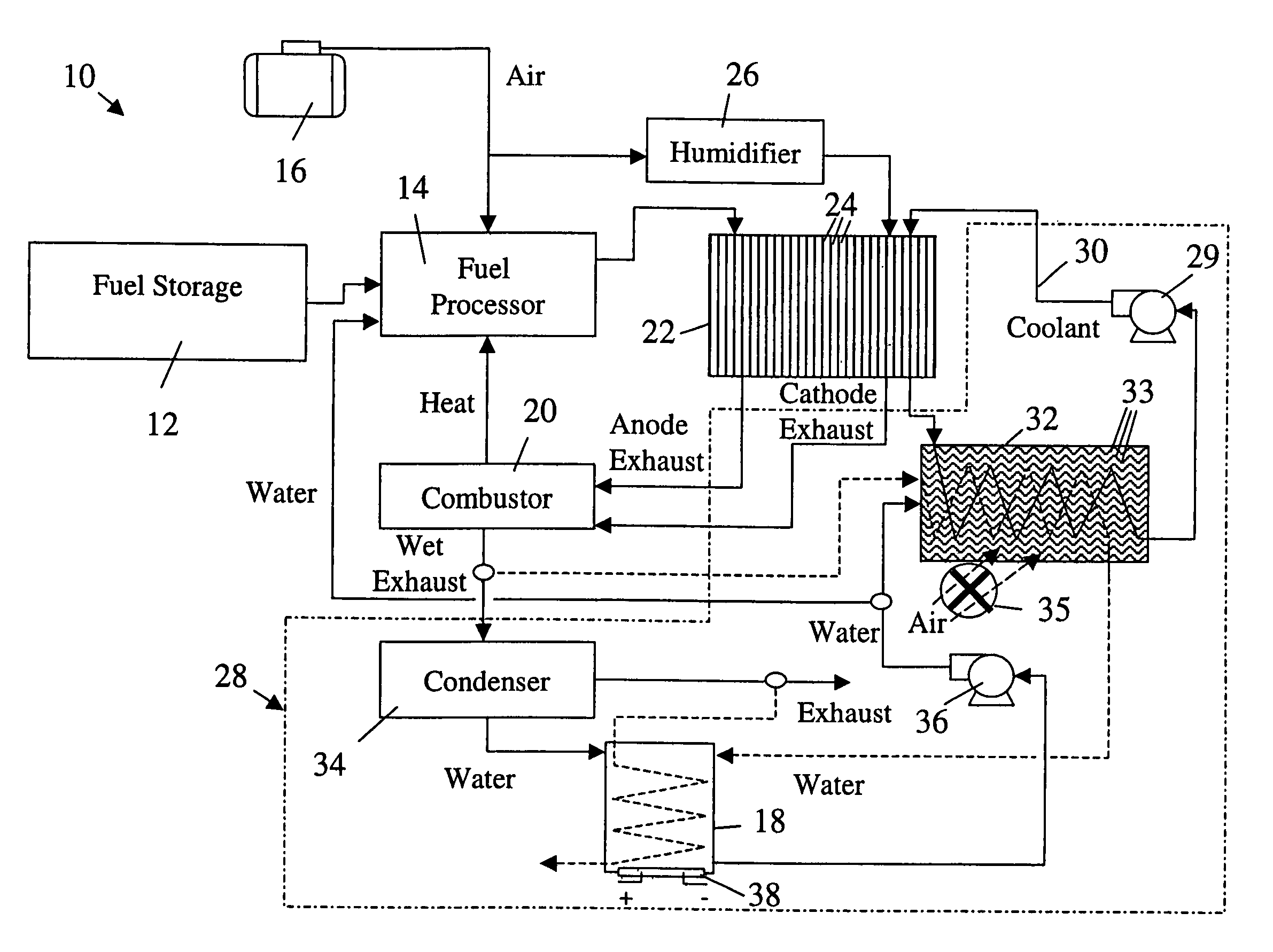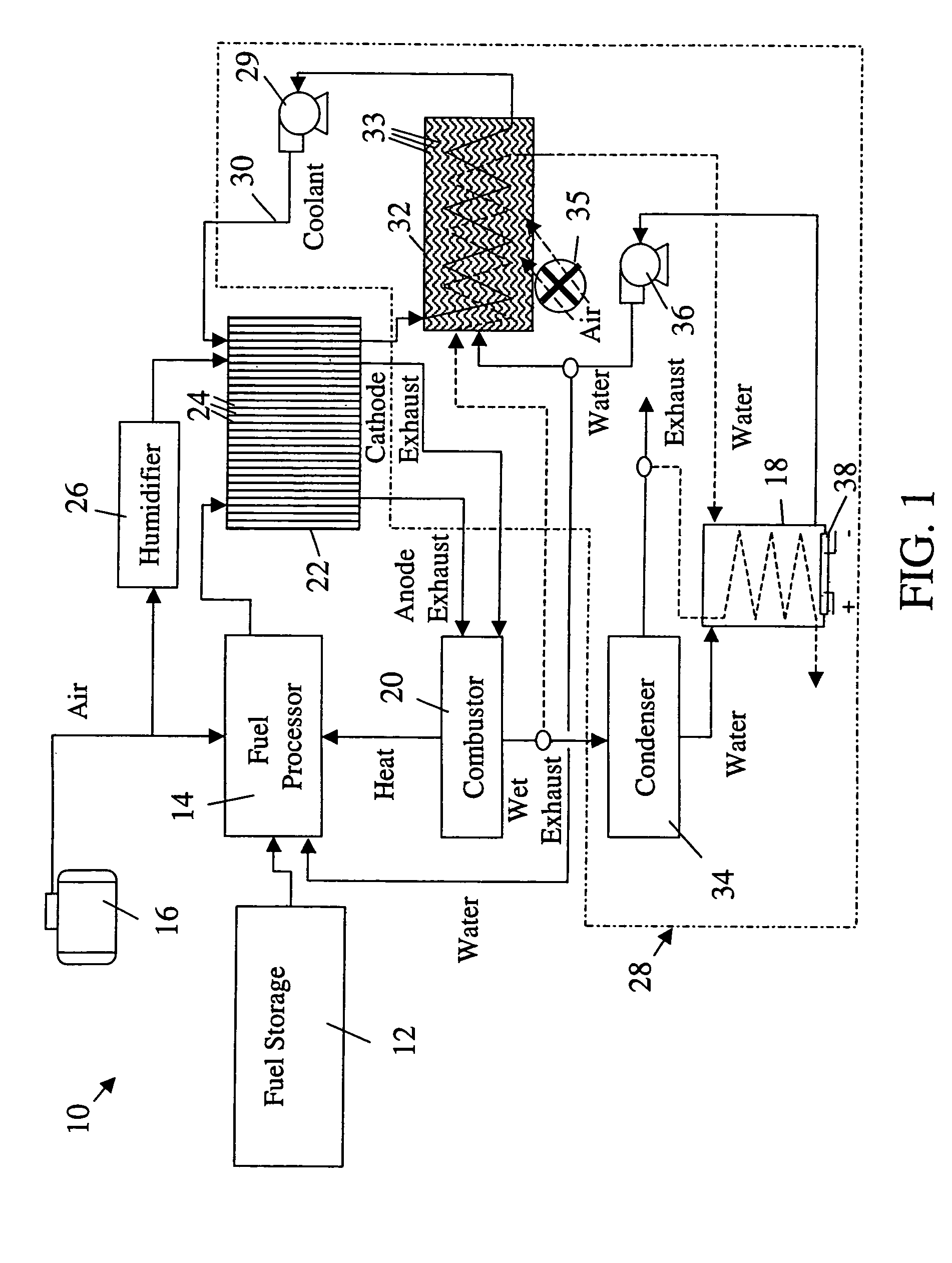Thermal management system and method for vehicle electrochemical engine
a technology of electrochemical engine and management system, which is applied in the direction of machines/engines, transportation and packaging, battery/fuel cell control arrangement, etc., to achieve the effect of reducing the required cooling airflow rate, reducing the airflow rate, and convenient packaging of radiators
- Summary
- Abstract
- Description
- Claims
- Application Information
AI Technical Summary
Benefits of technology
Problems solved by technology
Method used
Image
Examples
Embodiment Construction
[0013]With reference to FIG. 1, an engine is generally indicated by symbol 10. In one embodiment, the engine 10 is an electrochemical engine (ECE), which operates to generate electricity in a fuel cell stack given two reactants, e.g., a hydrogenous gas and a gas containing oxygen. Hydrogenous gases for the fuel cell stack may be produced on board the vehicle and this method is described hereinafter; however, the present invention is not limited to such a system. In another embodiment, the engine 10 is a conventional internal combustion (IC) engine for vehicles that have limited radiator space.
[0014]In the illustrated embodiment, a liquid fuel, such as gasoline, diesel, methanol, etc., is stored on board the vehicle in a fuel tank 12. The fuel is supplied to a fuel processor 14 in the ECE 10. The fuel processor 14 may also receive compressed air from an air compressor 16 for partial oxidation and water, if available, from a water tank 18 for steam reformation. A combustor 20 generate...
PUM
 Login to View More
Login to View More Abstract
Description
Claims
Application Information
 Login to View More
Login to View More - R&D
- Intellectual Property
- Life Sciences
- Materials
- Tech Scout
- Unparalleled Data Quality
- Higher Quality Content
- 60% Fewer Hallucinations
Browse by: Latest US Patents, China's latest patents, Technical Efficacy Thesaurus, Application Domain, Technology Topic, Popular Technical Reports.
© 2025 PatSnap. All rights reserved.Legal|Privacy policy|Modern Slavery Act Transparency Statement|Sitemap|About US| Contact US: help@patsnap.com



